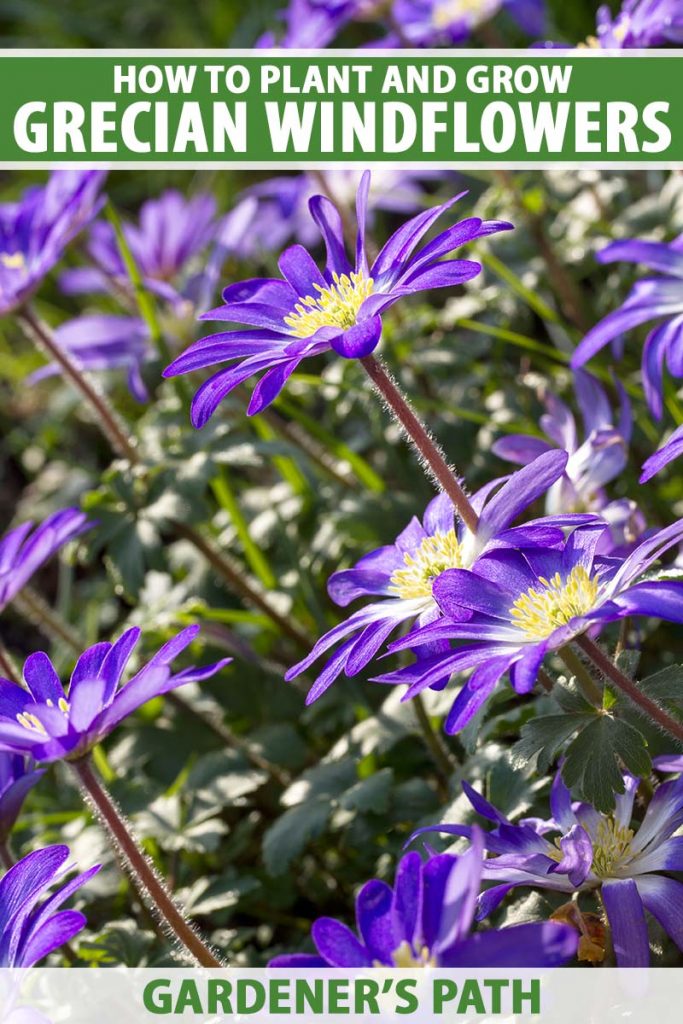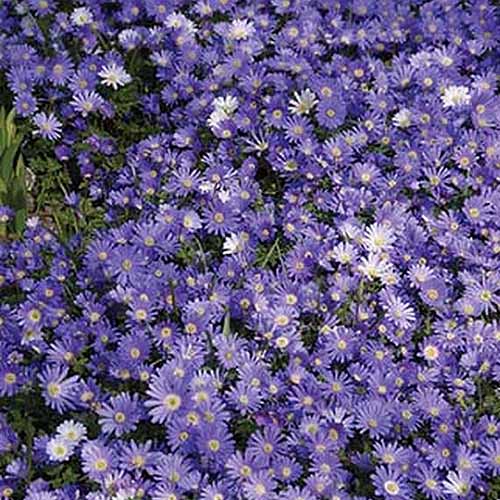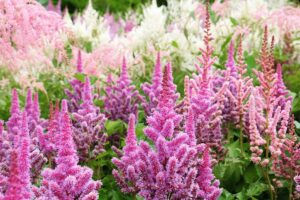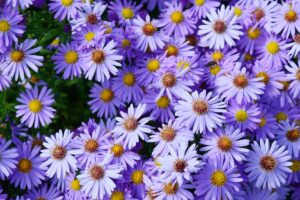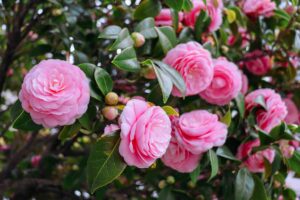Anemone blanda
If you’re looking for a sweet little flower to brighten up your garden early in the year, look no further than Grecian windflowers.
Also known as Balkan anemones or winter windflowers, the delightful, daisy-like flowers bloom in shades of blue, mauve, pink, and white.
Low-growing, ferny foliage makes a soft ground cover and plants spread readily, creating pretty blankets of color in late winter or early spring.
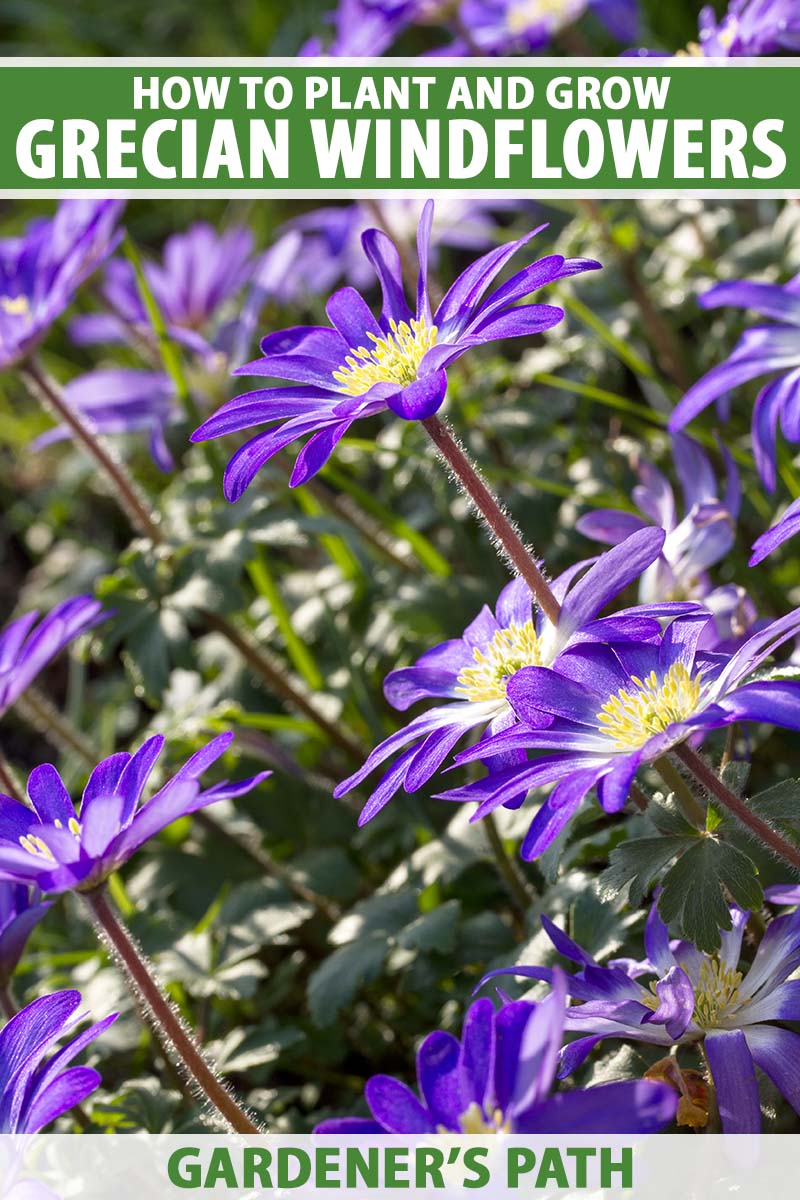
We link to vendors to help you find relevant products. If you buy from one of our links, we may earn a commission.
They’re a knockout when mass planted in drifts, and suit a variety of garden settings, from borders or rockeries to containers and naturalized settings.
Reliable and easily cultivated, these little charmers are among the first to break dormancy and provide a refreshing pop of color when winter’s at its drabbest!
Pretty, cheerful, and low maintenance, they’re a sure harbinger spring is on its way.
Join us now to learn all about how to grow Grecian windflowers.
What You’ll Learn
What Are Grecian Windflowers?
Anemone blanda, or Grecian windflowers, are a species in the Anemone genus, members of the Ranunculaceae (buttercup) family, and are tuberous herbaceous perennials grown from fall-planted corms.
Native to southeastern Europe and the Middle East to the Caucasus, including the Balkans, Turkey, and Greece, they’re one of the first flowers to appear in the spring garden – often flowering before winter is officially over.

The name anemone is derived from the Greek word anemos, which means wind, while blanda means mild or charming – and charming they are!
An excellent spring ground cover, plants grow to a height of four to eight inches and form mats of color with delightful, daisy-like flowers.
Deep azure blue is the primary color you’ll see, but many cultivars come in shades of magenta, mauve, pink, or white, as well as bicolor combinations.
Flowers feature sunny eyes of gold-green, and the petals close at night. They quickly reopen once the sun rises, attracting butterflies and other pollinators.
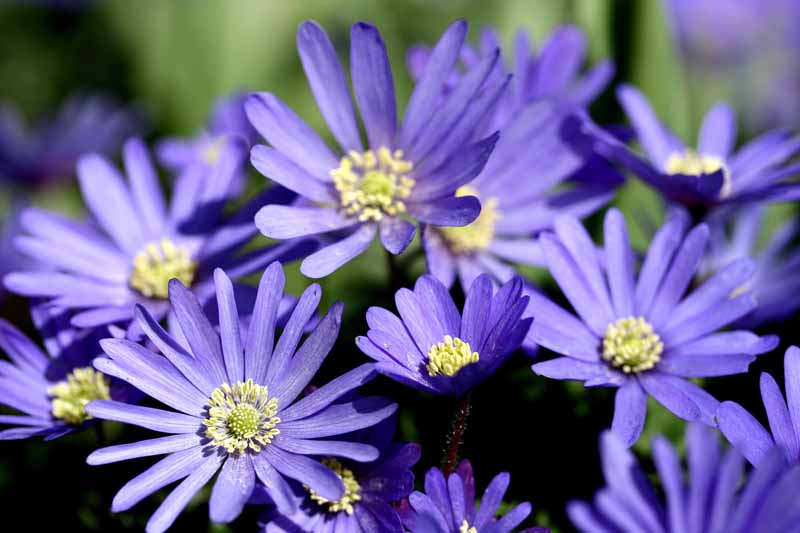
They typically bloom for four to six weeks in late winter through early spring, and go dormant for the summer and through the fall. About a month after flowering, the delicate, parsley-like foliage yellows and dies back.
A Note of Caution: Grecian windflowers are toxic when ingested, and should be kept away from children and pets.
Propagation
Windflowers spread and form clumps through bulb offsets underground, and propagate naturally by self-seeding above ground as well.
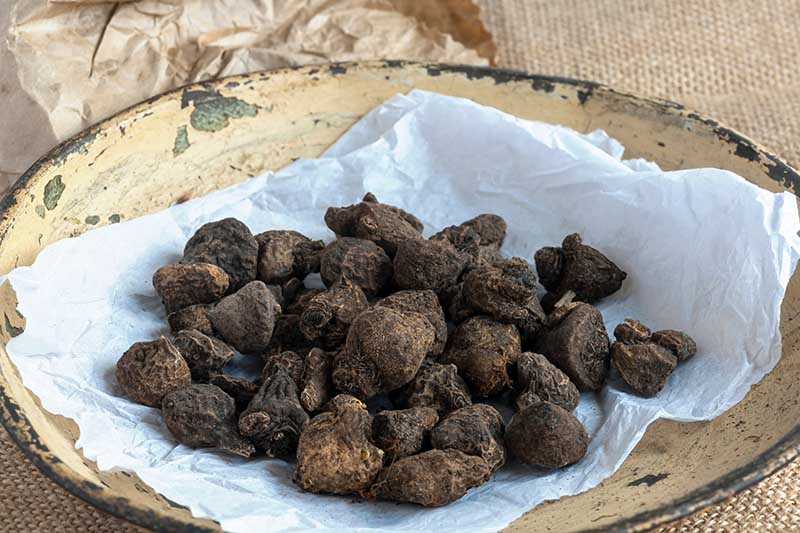
New plants can be started from seed, but the results are inconsistent, as germination can be unreliable, and seedlings are slow growing – flowers won’t appear until the second year of growth.
If you have established plants and you want to give this a try, seeds can be harvested when ripe and sown in a cold frame of loose, well-draining soil. Allow seedlings to overwinter under a thick layer of mulch, then plant out the following spring.
Propagation by root division brings better results, with flowers typically appearing in three months.
Here’s what you need to do:
- Lift clumps in midsummer, after plants have gone dormant.
- Using a garden fork, dig out six to eight inches from the center and lift the fibrous root mass.
- Brush away any loose soil and gently untangle the roots.
- Ensure each division has a healthy rhizome and crown, then replant divisions to the same depth and water in well.
You can learn more about how to divide perennials in our guide.
How to Grow
Easily cultivated, windflowers are typically planted in fall.
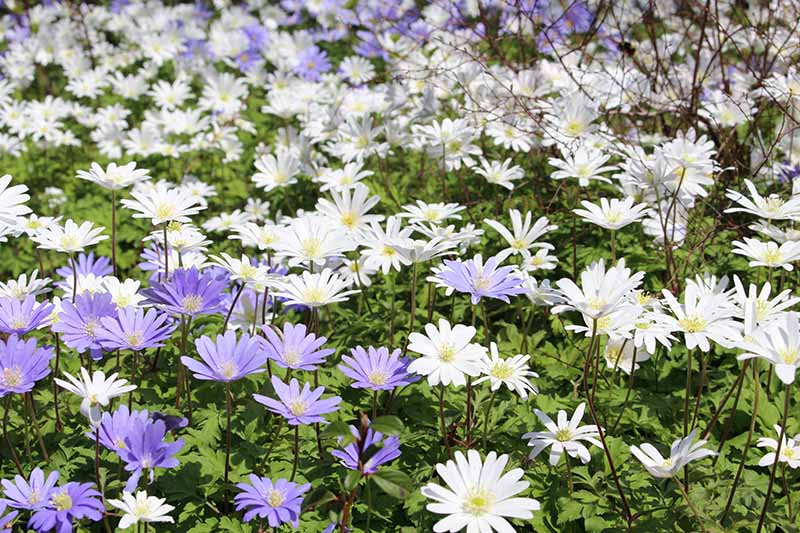
They enjoy loose, humus-rich soil that’s well-draining, and kept evenly moist during the growing season. Amend your planting sites with sand or pea gravel if needed, to prevent standing water issues, which can lead to root rot. Once plants have gone dormant, the soil may be allowed to dry out.
They prefer a full sun location, but are also tolerant of partial shade.
The gnarly little corms show no clear signs of which end is top or bottom, and will grow just fine regardless of which way they are planted.
Here’s how to plant the corms:
- Before planting, soak corms overnight or for 12 hours to aid with germination.
- Loosen the soil with a garden fork and mix in a shovelful of aged compost, leaf mold, or well-rotted manure.
- Mix in some bone meal or bulb fertilizer, according to package instructions, to form strong, healthy roots.
- To improve drainage, mix in a shovelful of landscape sand or pea gravel.
- Create small planting holes and plant corms three to four inches deep. And remember, there is no correct up, down, or sideways with these corms – pop them in the holes and they will know how to grow!
- Space corms two to three inches apart to allow room for their spreading habit.
- Backfill the planting holes and gently tamp the soil in place.
- Water lightly.
In regions with prolonged periods of temperatures below freezing, add a two to four-inch layer of mulch for winter protection.
Plants should not be left to overwinter in containers that are subject to freeze and thaw cycles. Move containers to a frost-free location, or dig up and store the corms for winter.
Growing Tips
Keep the following tips in mind to get the most from your windflowers:
- These plants don’t like wet feet, and good drainage is a must to prevent rhizome rot.
- Because the foliage dies back in summer, it can be easy to lose track of their location. Use a stake to mark their spot in the garden, to prevent accidentally digging up the roots.
- Provide a winter mulch to protect against freezing temperatures and drying winds.
Pruning and Maintenance
Windflowers typically flower for four to six weeks, and the foliage remains for another four to eight weeks, building and storing energy for next year’s growth.
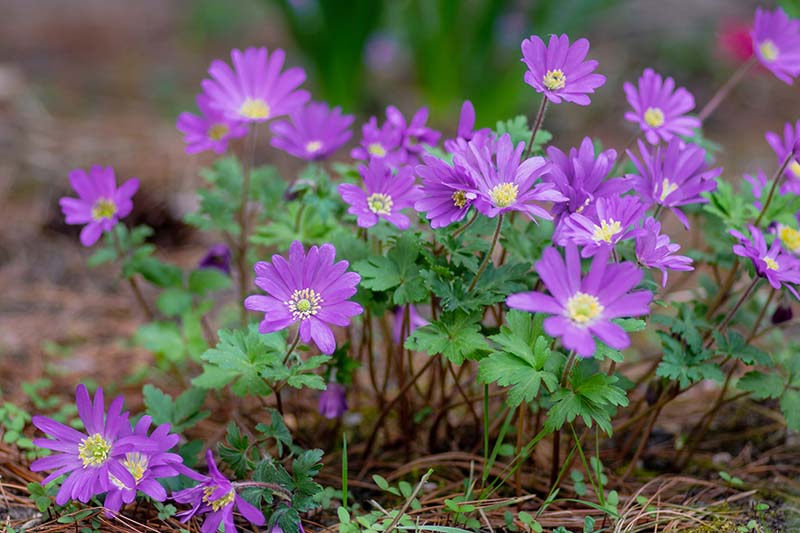
Allow the foliage to yellow and die back on its own, after which it can be raked to clean up the site.
If you live outside the recommended range of hardiness zones for your selected varieties, typically Zones 4-9, dig up the rhizomes and store over winter.
Lift the roots as for propagation and gently separate them. Allow rhizomes to dry thoroughly for 10 to 14 days in a warm, dry location out of direct sunlight.
Pack the dried corms into a storage medium such as peat moss, perlite, or vermiculite and store in a dry, well-ventilated location with a temperature of 50 to 55°F. A cool cellar, unheated garage, or shed will make a good storage location.
Cultivars to Select
Here are a few popular selections to consider. And be sure to check out our article on 15 of the best anemone varieties for more suggestions.
A. blanda Mix
This mix delivers a showy blend of daisy-like flowers in bicolor blends and shades of periwinkle blue, magenta pink, and pure white with bright green-gold centers.
Plants produce a charming blanket of bright flowers in early spring and are best when mass planted under deciduous trees and in naturalized settings. Or add corms throughout the garden in beds, borders, rockeries, and containers.
Low-growing with a mature height of only three to five inches, A. blanda prefers a site with full to part sun and humus rich, sandy soil that’s evenly moist and well-draining. Hardy in Zones 4-8.
You can find packets of 12 bulbs available at Nature Hills Nursery.
Blue Shades
An early spring classic, ‘Blue Shades’ flowers in blue tones ranging from powder to periwinkle, with charming, bright white eyes and ferny foliage.
The low-growing plants reach only four to six inches high, and look terrific when mass planted singly or with other early bloomers.
Plant the corms in fall and locate at the front of beds and borders, in containers, or scattered in woodlands and under deciduous trees. This variety grows happily in full or part sun and makes an adorable ground cover for shady gardens.
Hardy in USDA Hardiness Zones 4-8.
You can find packets of 15 bulbs available at Burpee.
Pink Charmer
Excellent as an early spring ground cover, ‘Pink Charmer’ is delightful with daisy-like flowers in shades of magenta pink with pretty chartreuse centers.
They make a striking impact planted in drifts, under deciduous trees, and in woodland settings, or mixed with other early spring bloomers like crocus, grape hyacinth, and snowdrops. And they readily add charm to beds, borders, containers, and rockeries.
Low growing at only six to eight inches, plants form clumps and are well-suited for full to part sun locations. Hardy in Zones 5-9.
You can find packets of 15 bulbs available at Burpee.
Managing Pests and Disease
Resistant to deer and rodents, anemones are mostly problem free – but there are a few issues that can arise.
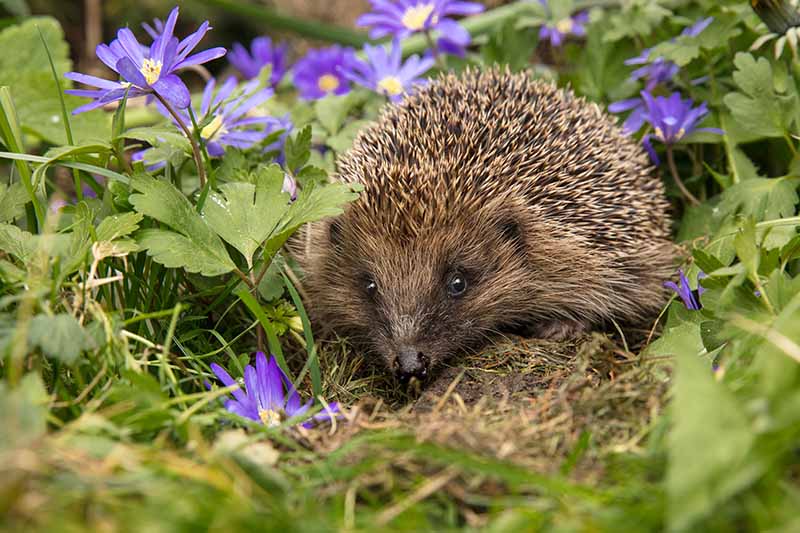
Caterpillars, slugs, and snails all enjoy snacking on tender greens including flowers, foliage, and stems. Handpick and dispose of these pests when you see them.
If gastropods are a common problem in your garden, be sure to read up on how to protect your garden from slugs and snails.
Leaf spot can make an occasional appearance, a bacterial or fungal infection that may cause sooty spots that yellow and then turn brown. Remove and dispose of infected leaves.
Powdery mildew is a fungal disease that appears as a light colored, fuzzy coating on leaves and is caused by poor air circulation or damp, cool conditions.
Remove any infected material and dispose of it. Thin plants if needed to improve circulation, or locate in full sun as a preventive measure.
Rhizome rot is an infrequent problem, usually the result of poor drainage. Before planting, ensure the soil is free draining, and amend with landscape sand or pea gravel if needed, to prevent roots from standing in excess water over winter.
Best Uses
Windflowers create a beautiful blanket of color when planted in large drifts where they can spread undisturbed.

Locations under deciduous trees or among short grasses, as well as meadows and open woodlands, make good sites for naturalizing. Or select a mix of cultivars and mass plant under spring flowering fruit or ornamental trees for an excellent early display.
In the garden, they make a vibrant statement when planted en masse in mixed herbaceous borders, containers, or perennial beds, or mixed into lightly shaded shrubscapes. And they add cheeky allure planted in pockets throughout rockeries.
Quick Reference Growing Guide
| Plant Type: | Flowering perennial | Flower / Foliage Color: | Blue, pink, white / green |
| Native to: | Southeastern Europe and Eurasia to the Caucasus | Maintenance: | Low |
| Hardiness (USDA Zone): | 4-9 | Tolerance: | Deer, rabbits and other rodents, salt |
| Bloom Time / Season: | Early spring | Soil Type: | Loose, humus-rich, evenly moist |
| Exposure: | Full to part sun | Soil pH: | 6.0-7.5 |
| Spacing: | 2-3 inches | Soil Drainage: | Well-draining |
| Planting Depth: | 3-4 inches | Companion Planting: | Crocus, grape hyacinth, early daffodils, snowdrops |
| Height: | 4-8 inches | Uses: | Beds, borders, containers, drifts, lawns, woodland settings, rockeries |
| Spread: | 3-6 inches | Family: | Ranunculaceae |
| Time to Maturity: | 3 months | Genus: | Anemone |
| Water Needs: | Moderate | Species: | blanda |
| Common Pests: | Slugs, snails | Common Diseases: | Leaf spot, root rot, powdery mildew |
Bright Blankets of Color
Ideal for full sun or gently shaded gardens, Grecian windflowers are wonderfully low maintenance, and create striking blankets of bright color in the early garden.

Remember to keep the soil moist during the growing season and ensure it’s well-draining. After that, these hardy corms are pretty much self-sufficient – so you can kick back and enjoy!
If any of you readers have a favorite spot in the garden for A. blanda, tell us about it in the comments section below.
And for more information about anemone flowers, be sure to add these guides to your reading list next:
- How to Plant and Grow Anemone Flowers
- How to Grow Fall-Blooming Japanese Anemone Flowers
- How to Grow and Care for Candle Anemones
© Ask the Experts, LLC. ALL RIGHTS RESERVED. See our TOS for more details. Product photos via Burpee and Nature Hills Nursery. Uncredited photos: Shutterstock.
